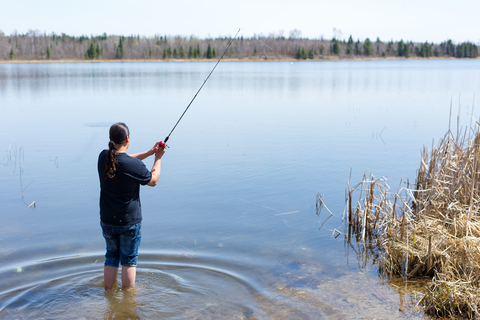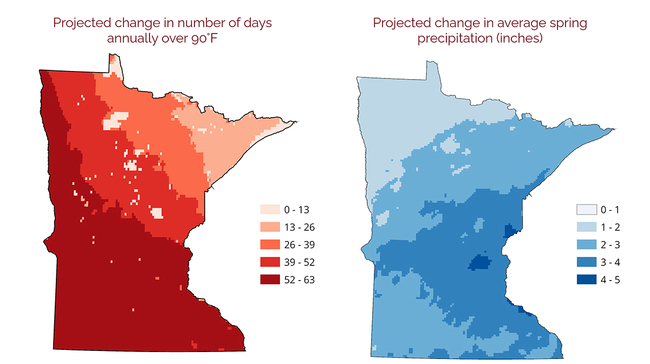New tool, Minnesota CliMAT, informs long-term local planning
The University of Minnesota Climate Adaptation Partnership (MCAP) recently launched an interactive online tool that offers highly localized future climate information for Minnesota.
Users can view climate projections down to a 2.5-mile scale across the state, visualizing how even specific towns will likely be affected in the coming decades.
The Minnesota CliMAT tool offers information on future changes in temperature, precipitation, snow cover and other key climate variables using the latest generation of global climate models, data vital to informing how and where we prepare for the impacts of climate change. It is available to the public at no charge.
“This information is critical for understanding our local climate risks and what future we need to prepare for,” says Heidi Roop, MCAP’s director and Extension climate scientist. “We’re hearing from engineers, planners, foresters, farmers, homeowners — folks across the board — that they need this future climate information to inform and guide their work.”
MN CliMAT can be used by the public, policymakers, and a range of sectors and industries
- The agricultural industry can estimate future soil moisture, allowing farmers to make needed investments in resilience strategies.
- The tourism industry and anglers will benefit from understanding future lake temperatures and ice cover duration, helping to inform how ecosystems and recreation patterns may shift.
- Engineers and planners can use the tool to inform how and where to build critical infrastructure meant to last for generations.
MCAP is committed to helping the public and professionals learn how to apply the data — staff are offering an ongoing series of webinars and in-person workshops across the state.
“Creating new climate projections is only the first step in planning for climate change,” said Suzi Clark, a climate resilience Extension educator with MCAP. “We want to help people understand the projections and integrate these data into their long-term planning.”
MN CliMAT, which uses the latest generation of global and regional climate models, was funded with support from the Minnesota Department of Commerce, University of Minnesota Extension, and the Minnesota Sea Grant College Program with funds from the National Oceanic and Atmospheric Administration.
More information on the tool and upcoming workshops is available on MCAP’s website.
About MCAP
The University of Minnesota Climate Adaptation Partnership (MCAP) is a joint program of University of Minnesota Extension and the College of Food, Agricultural and Natural Resource Sciences. MCAP works to develop critical climate science knowledge, champion climate adaptation leadership and support climate resilience efforts across communities to ensure Minnesota is making needed progress to prepare for our changing climate. MCAP is a leading multi-sector group dedicated to climate adaptation and resilience in the Midwest and partners directly with state, federal and local governments, the private sector, non-profits, Tribes, and community organizations.
Permission is granted to news media to republish our news articles with credit to University of Minnesota Extension. Images also may be republished; please check for specific photographer credits or limited use restrictions in the photo title.



